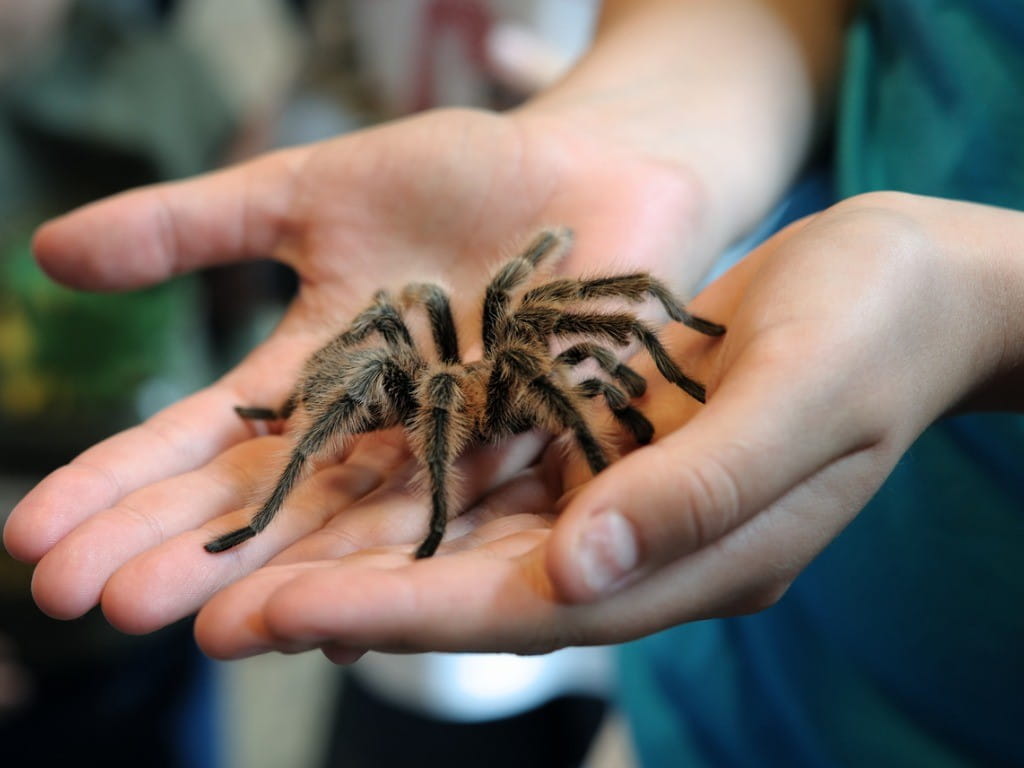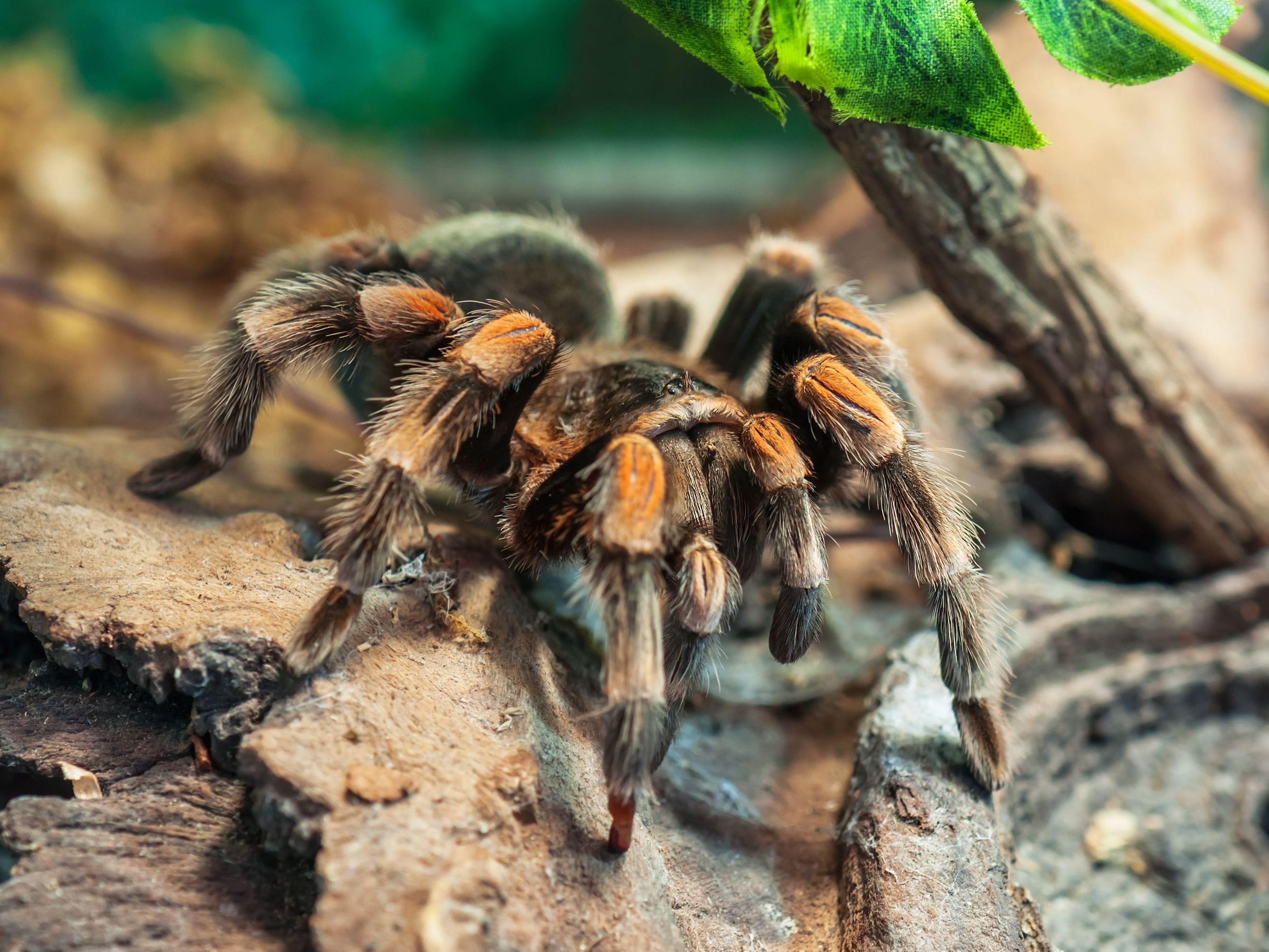Are Tarantulas Dangerous?

The Bottom Line
Tarantulas are venomous, but the effects of the venom of tarantulas indigenous to North America are typically mild in humans and only cause pain at the bite site. Contact with tarantula hairs can cause redness, itching, and swelling. Avoid getting tarantula hairs in the eye. If you are bitten, wash the bite with soap and water, and then contact Poison Control, online or by phone.

What do tarantulas look like?
Tarantulas are large, hairy spiders with 8 large legs. Adult tarantulas can have a leg span of 5–8 inches. Tarantulas can be black, brown, gray, or even brightly colored. Some have light-colored stripes on their legs. Despite having 8 eyes, tarantulas have poor eyesight and find their prey by touch or by sensing vibrations in the ground. They can live for 5–20 years.
The fearsome appearance of tarantulas accounts for their frequent starring roles in folklore and horror movies. However, they are generally docile, which leads some people to keep them as pets (in terrariums, not on the loose).
Where do tarantulas live?
Tarantulas prefer warm climates and live on every continent except Antarctica. In the US, they are most likely to be found in the dry areas of western states. Most tarantulas live in burrows dug into the ground where they can avoid direct sunlight, but some species prefer living in trees.Do tarantulas bite? Are they venomous?
When a tarantula feels threatened or is roughly handled, it might bite. Tarantulas have a pair of large fangs, which usually leave visible marks. Before biting, however, a tarantula will often adopt a “threat pose” with its front legs lifted into the air. This is your warning to leave the tarantula alone.Tarantulas are venomous, and a tarantula bite can result in the injection of venom. Tarantulas indigenous to North, Central or South America cause milder symptoms compared to tarantulas found in other parts of the world.
What are the symptoms of a tarantula bite?
Tarantula bites can be quite painful, resulting in a throbbing that can last for hours. The bite area might become inflamed and swell up. Fever, nausea, and vomiting occur rarely. In general, the effects of North American tarantula bites are mild in humans.What to do if you are bitten by a tarantula.
All tarantula bites should be washed well with soap and water. There is no antidote for tarantula bites, but the pain can be managed with cool compresses (such as ice packs) and over-the-counter pain relievers (such as acetaminophen or ibuprofen). People bitten by tarantulas should check with their healthcare provider to see if their tetanus immunization is up-to-date.Are tarantula hairs dangerous?
In addition to big fangs, tarantulas have another weapon: they can release a cloud of irritating hairs. Contact of the hairs with the skin can cause inflammation, including pain, redness, itching, and swelling that can last for weeks. The hairs can also get into the eyes and cause pain, redness, sensitivity to light, and even damage to the cornea. The discomfort has been described as like having fiberglass particles in the eyes. The hairs can remain stuck in the eyes for a long time.What to do about tarantula hairs.
Hairs stuck in the skin can be removed using sticky tape. Inflammatory skin reactions can be treated with topical corticosteroids (such as hydrocortisone cream) and oral antihistamines. Skin irritation usually responds well to over-the-counter treatments but sometimes requires prescription-strength medicines. Hairs stuck in the eyes might need to be removed by a physician, but sometimes the hairs are so small that removal is difficult. If the eyes are affected, evaluation by an eye doctor is a must. Inflammatory eye reactions can be managed with corticosteroid eye drops.
If you suspect someone has been bitten by a tarantula, wash the area well with soap and water, then check the webPOISONCONTROL online tool for guidance or call Poison Control at 1-800-222-1222. Poison Control’s expert guidance, whether online or by phone, is always free, confidential, and available 24 hours a day.
Karen D. Dominguez, PharmD
Certified Specialist in Poison Information
Revised William G. Troutman, PharmD
Professor of Pharmacy Emeritus
Poison Control Media Information
Did you find this page helpful? If so, we need your support. Poison Control is in constant competition with misinformation online. Links to www.poison.org or our webPOISONCONTROL triage tool from other websites and blogs help internet searchers quickly find accurate information and Poison Control’s contact information in an emergency. If you use the content from this page, please provide attribution via a link back to this page, www.poison.org, or https://triage.webpoisoncontrol.org/#!/exclusions. By doing so, you could save a life. Thank you!
Poisoned?
Call 1-800-222-1222 or
Prevention Tips
- Keep children and pets away from tarantulas.
- Handle tarantulas very gently to prevent defensive bites and hair shedding.
- Wear gloves and eye protection when handling a tarantula to avoid contact with the spider's hairs.
This Really Happened
A 23-year-old man had redness and irritation in his eyes after letting his pet tarantula crawl over his face, arm, and neck. A special eye exam showed about 200 tarantula hairs stuck in 1 of his eyes. Some, but not all, of the hairs were removed. He was treated for several weeks with prescription eye drops, and his symptoms eventually improved (from Rutzen et al., 1993).For More Information
McLeod S. How to care for a pet tarantula. The Sprucepets. Accessed March 26, 2024.
Swift runner and trickster tarantula. Indians.org. Accessed March 25, 2024.
References
Belyea DA, Tuman DC, Ward TP, Babonis TR. The red eye revisited: ophthalmia nodosa due to tarantula hairs. South Med J. 1998;91(6):565-567.
Poisoned?
Call 1-800-222-1222 or
Prevention Tips
- Keep children and pets away from tarantulas.
- Handle tarantulas very gently to prevent defensive bites and hair shedding.
- Wear gloves and eye protection when handling a tarantula to avoid contact with the spider's hairs.
